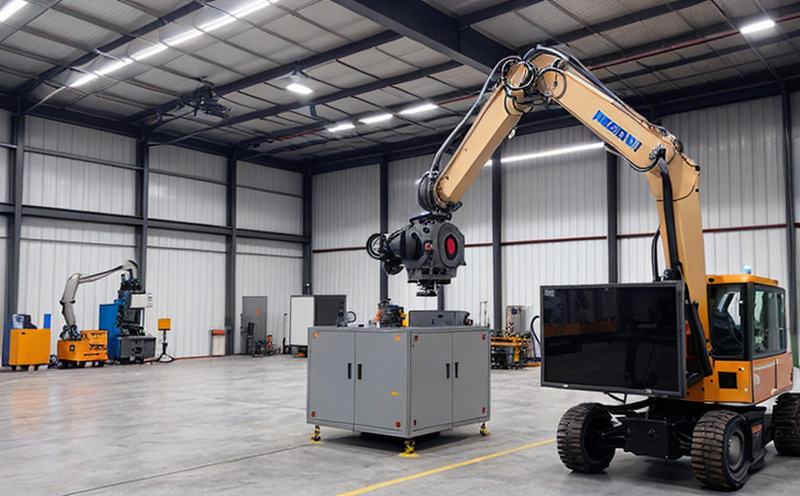IEC 63327 Real-Time Communication in Industrial Robotic Systems
The International Electrotechnical Commission (IEC) standard IEC 63327 defines the communication protocols and performance requirements for real-time data exchange between industrial robotic systems. This critical standard ensures that robotic systems communicate accurately, reliably, and efficiently with other devices in an industrial environment.
Real-time communication is essential for coordinating complex tasks across multiple robotic units. It enables seamless interaction among robots, machines, and humans within a manufacturing or production line. Compliance with IEC 63327 guarantees that the systems perform as intended under various operational conditions, which is crucial for maintaining safety, efficiency, and quality in industrial settings.
At our laboratory, we specialize in testing robotic communication systems to meet the stringent requirements of IEC 63327. Our state-of-the-art facilities allow us to simulate real-world scenarios that challenge the robustness and reliability of these systems. We employ advanced instrumentation such as network analyzers, protocol analyzers, and test rigs that replicate industrial environments accurately.
Our testing process involves several critical steps: first, we perform a thorough initial assessment of the communication system to identify potential areas for improvement or compliance issues. Next, we conduct comprehensive tests under various conditions, including high data throughput rates, low latency requirements, and network congestion scenarios. This ensures that the system can handle real-time communication demands effectively.
After testing, our team provides detailed reports outlining all test results and recommendations for any necessary adjustments. These reports are invaluable tools for quality managers and compliance officers looking to ensure their robotic systems meet industry standards. R&D engineers benefit from these insights as they refine designs and enhance system performance continuously. Procurement professionals can use the findings to select vendors who supply compliant components.
By adhering strictly to IEC 63327, industrial robotics manufacturers and integrators can build confidence in their products' reliability and safety. This compliance is especially important for sectors like automotive manufacturing, electronics assembly, and heavy machinery production where precision and efficiency are paramount.
Why It Matters
Compliance with IEC 63327 goes beyond mere technical specifications; it ensures that industrial robotic systems operate safely and efficiently in dynamic environments. In industries such as automotive, electronics, and aerospace, where precision and speed are critical, real-time communication is not just a nice-to-have feature but an absolute necessity.
For example, consider the assembly line of a high-volume automotive manufacturer. Here, robots must communicate with each other seamlessly to ensure that every part is placed correctly without delay. Any disruption in this process could lead to production downtime, increased costs, and potential safety hazards. By adhering to IEC 63327, manufacturers can avoid these pitfalls.
The standard also plays a crucial role in ensuring interoperability between different robotic systems from various suppliers. This is particularly important in large-scale manufacturing plants where multiple robots may need to work together on the same task. Standardized communication protocols facilitate smooth integration and minimize compatibility issues.
Moreover, IEC 63327 emphasizes security measures that are essential for protecting sensitive data exchanged between robotic systems. As industries become more connected, the risk of cyberattacks increases. Robust communication protocols like those outlined in this standard help safeguard against unauthorized access and data breaches.
In summary, adhering to IEC 63327 is not just about meeting a set of rules; it's about ensuring that industrial robotic systems function optimally, safely, and securely in real-world applications. This compliance enhances productivity, reduces errors, and fosters innovation within the robotics sector.
Applied Standards
The IEC 63327 standard is part of a broader set of standards that govern industrial automation systems. These include IEC 61131-10 for programmable logic controllers (PLCs), IEC 61508 for safety-related systems, and IEC 61784-2 for fieldbus networks.
IEC 63327 specifically addresses real-time communication between industrial robots and other devices. It specifies the protocols, message formats, and performance criteria necessary to ensure reliable data exchange in harsh industrial environments. The standard covers both wired and wireless communication methods, making it versatile enough for various application scenarios.
For testing purposes, we use the latest versions of these standards as our benchmark. Our laboratory adheres strictly to IEC 63327 and other relevant international standards like ISO/TS 15066:2014 to provide accurate and consistent test results. This ensures that manufacturers can trust the outcomes from our testing.
Industry Applications
Automotive manufacturing: Ensuring precise coordination between robotic arms during assembly processes.
Electronics assembly: Facilitating high-speed data exchange to support rapid production lines.
Aerospace engineering: Providing secure communication channels for critical operations.
Pharmaceuticals: Guaranteeing accurate dosing and processing in automated systems.
Heavy machinery maintenance: Enabling efficient remote diagnostics and repair procedures.
Logistics and warehousing: Optimizing the flow of goods through automated storage and retrieval systems.
These applications underscore the importance of robust real-time communication in industrial robotics. By adhering to IEC 63327, manufacturers can ensure that their robotic systems perform consistently across different industries.





